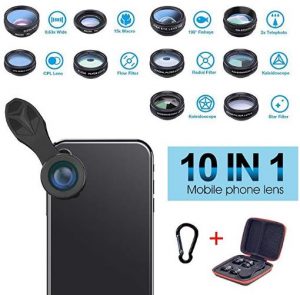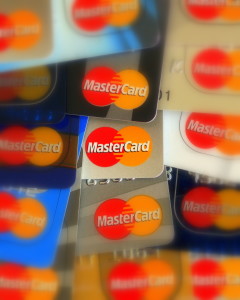October 21st, 2018 by Admin
The season is finally here. Time to set up your sales, giveaways, and stock up on goods to sell. On top of that, it is always a good idea to take care of your clients and those who take care of your business year round. We gathered a list of gifts that could bring a smile to their face without breaking the bank.

For the bookkeeper that keeps your budget in check and probably works very hard for you, this nice coffee mug can be a reminder of how much it means to you that they take care of your business.

For the tea-loving virtual assistant that keeps your life in balance. These 5 Pack Silicone Tea Strainers can bring zen into her life. Best part yet, if you are a Prime member, you get free shipping!

For the superstar salesperson in your business life. A funny and cool stress relief toy squishy can be the solution for those high-stress days. It is your way of saying “Thank you for all you do” and having a sense of humor.

For the nature-loving assistant, a little succulent can brighten up their desk or home. What a better way to bring some green into their life and saying thank you for the hard work?

For the graphic designer that gives you brand life. This basic, but very usefull LCD Writing Pad can be the solution for creativity blocks or quick notes as they go through their creative process.

For the savvy social media manager that works on getting your brand to stand out. This 10 in 1 Mobile Phone Lens can be the perfect addition to their social media life on the go.
Lastly, we have another idea for you. Reach out to your local small businesses and see what they have to offer during the season. Not only will they probably have a unique gift for that important person in your business, but you will be helping them grow.
During the holidays is always good to show how much your customers mean to you, but more importantly is to show how much you appreciate your employees and contractors. After all, without them, your business would not run as smoothly as it does.
Posted in Small Business Improvement Tagged with: admin, Amazon, Bookkeeping, camera, coffee, graphic designer, holiday, holidays, ideas, photography, prime member, retail, small business, small businesses, small online business owners, social media, stress relief, succulent, tea
February 24th, 2014 by Elma Jane
When someone asks what business you are in, how do you typically respond?
For many online sellers, the answer is likely I sell (name of the product), I’m an ecommerce merchant or I’m an online retailer.
Make the focus of your business your customers and its value proposition, not the fact that you sell online. It’s time to simply answer the question of what business you are in with a response that is more or less, “I am a (distributor, retailer, reseller) of (name your products) for (name your market).”
Back then, most business owners who sold products online described themselves as “ecommerce businesses” or “online retailers,” to differentiate from brick-and-mortar or catalog retailers. Most operated their own pure-play online stores. Some sold products on eBay. Amazon’s marketplace was mostly comprised of larger retailers. There’s an evolution in how e-commerce owners describe themselves.
Today, you will still hear many online sellers describe themselves as “ecommerce businesses” or “online retailers.” But, in 2014, those terms don’t really apply. Whatever you sell, you are delivering a set of products to meet the needs of a specific market. “Ecommerce” or “online retailing” is simply a technology and a sales channel.
There is now no difference between “ecommerce” and “commerce.” It’s time to get rid of the “e” in ecommerce. Most businesses participate in ecommerce in some fashion. You engage your customers in many different channels — your own e-commerce site, brick-and-mortar, online marketplaces. Regardless, you and virtually every other B-to-C or B-to-B company are selling goods to customers across those channels.
Why Worry about Labels?
Today, commerce is multichannel and highly competitive. It’s done online, on the phone, face-to-face, and on desktop, mobile, and tablet devices. Make sure your business has an omnichannel strategy, so your shoppers can find you. Make sure the information about your company and products is consistent regardless of the channel. Focus on whom your prospective customers are, what they want to buy, and how much they are willing to pay.
Business owners should think strategically. Part of strategic thinking is focusing on the bigger picture, such as having the right products and ensuring that your buyers can find them.
Omnichannel Focus
Think about omnichannel commerce every day. Get your brand and products in front of your target customers regardless of where they are shopping. Below are some things to consider to facilitate an omnichannel strategy.
Chat and phone. If you don’t offer online chat or take phone orders, consider doing so.
Marketplaces. If you aren’t selling your products in marketplaces outside of your own online store, consider doing so.
Mobile. If you don’t have a mobile strategy, you need one.
Payment options. If you only take credit cards for payments on your website, add alternative payments like PayPal, Google Wallet, or Amazon Payments.
Social media. If you don’t have a social media presence, your market share is likely declining.
Customer Focus
Twenty-five years ago, if you asked a brick-and-mortar retailer or a catalog vendor what business she was in, she would likely respond as, say, “jewelry retailer,” “men’s clothing store,” “a department store,” or “hardware store.” She knew her target customer niche, how to reach them, and what products they wanted to buy. Those businesses that did the best job of (a) matching products to the consumer, (b) offering low prices, and (c) utilizing the right distribution likely won most of the business.
It’s time to get back to that focus. It’s more challenging than it used to be because the purchase cycles are far more complex than in 2002. There is no longer a straight path from identifying the need to research to purchase. Consumers typically identify a need and purchase intent, research products, research prices, research products further, conduct social media research, and then purchase a product and demand instant gratification and free shipping.
To be successful in 2014, commerce – not just ecommerce – requires the following.
Emphasize your value proposition. Regardless of how a shopper finds you, be sure he can quickly find out that you are a leading retailer of products in your market. Being clear on what your business is will also help establish trust with your shoppers.
Execute the 4 Ps of sales and marketing – “product,” “price,” “promotion,” and “place.”
First, make sure you know your target customers and what problems they are trying to solve or the need that you fulfill with your products. Know their demographics, their buying cycles, price tolerance, and where they research and shop.
Know your competitors.
Posted in Credit card Processing, Digital Wallet Privacy, e-commerce & m-commerce, Electronic Payments, Internet Payment Gateway, Mail Order Telephone Order, Mobile Payments, Small Business Improvement, Smartphone Tagged with: alternative payments, Amazon, brick and mortar, catalog retailers, catalog vendor, commerce, credit cards for payments, e-commerce site, ebay, ecommerce, ecommerce merchant, mobile and tablet devices, omnichannel, omnichannel commerce, online retailer, online sellers, online stores, phone orders, sales channel, sell online
January 29th, 2014 by Elma Jane
More than 60 percent of online shoppers returned or exchanged at least one item. About 95 percent of customers will go back to an online merchant and make additional purchases after a positive return or exchange experience, making managing the process important for e-commerce success.
Exchanges and returns will shortly be a hot topic for online retailers as Christmas gift recipients contact sellers in the wake of an exceptional holiday selling season. These Christmas gift recipients will want to exchange and return unwanted gifts, items that are wrong size, or even items that may have been damaged in transit.
Returns and exchanges are important for building long term customer relationships, with some 95 percent of shoppers going back to online merchants that have offered a good exchange or return experience in the past, according to data from Endicia, an electronic postage solution provider. Conversely, about 85 percent of consumers will not return to an online shop after a poor return or exchange experience, again according to Endicia.
What follows are tips for offering a better exchange or return experience for online shoppers.
Create an Opportunity
Returns and exchanges are also an opportunity to make additional sales. As mentioned above, about 95 percent of shoppers will return to an online store and make an additional purchase after a positive return or exchange experience.
Similarly, about 45 percent of shoppers will actually recommend an ecommerce merchant, again according to Endicia, after a positive return experience, meaning that taking care of an existing customers could lead to new customers too.
Consider sending each shopper who returns or exchanges an item a follow-up email, asking for feedback about the experience. Identify ways to improve the return process, and business in general will improve too.
Know the Cost of Returning
A guitarist for a popular party and event band recently ordered a new guitar strap from a merchant on the Amazon marketplace. Unfortunately, there was an error in the shipment, and the merchant apparently sent a shorter strap than expected. When this guitarist contacted the seller about an exchange, he was told that a new strap would be shipped that day and that he could simply keep the smaller strap.
This solution was great for the customer, who did not have to repackage the strap or arrange for a carrier to pick it up. He was generally happy with the experience. This was probably also better for the merchant, who might have simply been able to order a new guitar strap from its distributor for about the same cost has having the strap returned.
To make this sort of business decision, it is important to understand the real cost of managing a customer return, including the cost of the shipping and the labor necessary for processing the return once it arrives back at the seller’s warehouse. If it cost as much or nearly as much to return the item as it would to simply purchase another one wholesale, consider letting the customer just keep it, saving everyone involved time and expense.
Provide Return Instructions or a Return Label in Every Order
Shoppers don’t want to wait for return labels. In fact, about 62 percent of online shoppers want a return label included in the initial shipment, according to Endicia. Including a return label is not difficult, and many online sellers may find that the ability to do so is either built directly into the retailer’s ecommerce platform or is available via an extension to the ecommerce platform.
A second option may be to offer shoppers a simple, self-service way to print a return label from your site. This self-service option does not require the customer to contact the shipper to get authorization or wait for an emailed label. According to the Endicia data, about 61 percent of shoppers will be happy with an easy way to print return or exchange labels.
State Return and Exchange Policies Clearly
Let customers know exactly what to expect from the return and exchange process. Post clear, simple-to-understand policies on a page of the site specifically designated for returns or shipping policies.
Posted in Best Practices for Merchants, Credit card Processing, e-commerce & m-commerce, Electronic Payments, Gift & Loyalty Card Processing, Internet Payment Gateway, Visa MasterCard American Express Tagged with: Amazon, ecommerce, gift recipients, marketplace, online merchant, online retailers, online sellers, online shoppers, return or exchange, returns and exchanges, self-service
January 29th, 2014 by Elma Jane
Ecommerce and mobile-based e-commerce have grown significantly this year. Cyber Monday ecommerce sales, as an example, reached $1.735 billion originating from desktop and laptop devices, according to comScore. Even Black Friday, which is better known for brick-and-mortar retail sales, saw online spending reach $1.198 billion in the United States, again according to comScore. Mobile online spending may also have grown, as some reports indicate that mobile-based site traffic was up 55 percent around Thanksgiving.
Many ecommerce merchants are enjoying a robust holiday selling season even as some brick-and-mortar stores are seeing relatively flat Christmas sales. To ensure continued growth and success, Internet retailers may want to challenge their businesses to improve in several areas in 2014.
Retailers, however, should not rest on their current success, but rather should challenge their businesses to improve in several areas, including free shipping offers, mobile optimization, personalization, data driven decision making, and cross channel sales.
Offer Free, Two-Day Shipping
The first challenge for online sellers in 2014 may be to find ways to offer free, two-day shipping to all or most shoppers. While it is likely there will still be minimum purchase and maximum weight requirements and restrictions, online shoppers are going to expect faster free shipping options thanks, in part, to the growth in services like Amazon Prime and ShopRunner.
Consider order fulfillment services, distributed warehouses, drop shipping, or even partnerships with other retailers to help meet this challenge.
Offer Personalization and Customization
Personalization and customization could be a significant competitive advantage in 2014.
Challenge your business to finally begin offering personalization and customization both onsite and in marketing. The easiest place to start may be with email marketing. Work to segment email marketing campaigns so that they address customers by name and with relevant products and offers that are based on an individual’s or group of shoppers’ stated preferences or on-site behavior.
Taking on this challenge means that the retailer’s marketing department will need to collect meaningful information about what interests shoppers and organize separate, custom campaigns around those interests.
Put Mobile Design and Marketing First
In November, IBM reported that mobile devices accounted for 31 percent of U.S. ecommerce-related web traffic around the Thanksgiving holiday this year, and that 17 percent of ecommerce transactions came from smartphones or tablets. On average, tablet users spent more than $126.00 per order, and smartphone users spent about $106 per order.
This data shows that mobile e commerce is not simply a novelty, but rather a must have for 2014.
If an e-commerce business is not optimized for mobile sales, 2014 is the year to take on that challenge, including offering a responsive design and mobile friendly payment options.
Sell Seamlessly Across Channels, Devices
Try to think of every way that a shopper might interact with an online store, and then make all of those touch points work together in 2014.
Retailers online or in physical stores need to offer shoppers a seamless, cross channel shopping experience that makes buying things easier for the customer. To continue to enjoy success in 2014, consider offering shoppers the ability to share orders across devices, applications, and even marketplaces.
In practice, this might mean that items added to a cart in an online store show up in the cart for the retailer’s iPhone app too. Or that a customer’s order history displayed on a retailer’s site shows orders placed on-site and via a marketplace like Amazon or eBay.
Use Big Data for Big Information
In 2014, find sources of good, usable Big Data, and put the resulting big information to use.
As an example consider, Weather Trends International, a Big Data company that uses historical weather information and advanced data processing to accurately predict weather 11 months in advance. This sort of Big Data information could show a snowboard and ski retailer what sort of winter major ski resorts are likely to have next year, and could inform purchasing and inventory choices.
Similarly, knowing that a particular region is going to have a warmer than normal July and August might impact how, where, and when a clothing retailer promotes shorts or bikinis on Facebook or AdWords.
Big Data is a popular trend in business and in marketing. The concept can mean different things to different businesses. For ecommerce, retailers should seek to use Big Data to gather big information, if you will, that may be used to make better buying and selling decisions.
Posted in Credit card Processing, e-commerce & m-commerce, Electronic Payments, Internet Payment Gateway, Mobile Payments, Mobile Point of Sale, Smartphone, Visa MasterCard American Express Tagged with: adwords, Amazon, big data, big information, brick and mortar, cross channel, cyber, drop shipping, e-commerce, ecommerce, Facebook, internet retailers, laptop devices, Mobile Devices, mobile friendly payment options, mobile optimization, mobile-based site, on-site, online, online shoppers, online store, onsite, personalization, retailers marketing, retailers online, shopping experience, smartphone, Smartphones, tablet, tablets
January 2nd, 2014 by Elma Jane
Online consumers generate an avalanche of data.Companies such as Amazon and Target have used Big Data for years. It’s the secret behind their highly personalized product recommendations and email promotions.
The good news is that smaller companies can use the power of Big Data in their businesses, too. But just because you can gather tons of data, doesn’t mean you should. For most small-to-midsize businesses, trying to harness Big Data can sometimes do more harm than good. It can slow down your website and cost time and money.
To make effective data-driven decisions in your business, control the types of information you collect. Focus only on the metrics that truly affect conversion rates and ignore the ones that don’t have much of an impact.
Tracking raw ad impressions regardless of whether they yield clicks or conversions is an example of monitoring low-impact data. The same thing goes for blindly monitoring Facebook Likes or Klout scores. Stop wasting resources on metrics like these. Devote your efforts on the data points that count.
Here are the most important ones for e-commerce merchants.
Number of Site Visitors and Where They’re Coming From
Online marketing is rarely cheap and quick. You have to determine the best strategies to spend resources on. There are several free and easy-to-use tools that can provide this information.
Google Analytics is an excellent tool that gives you insights on your traffic and traffic sources. To go deeper, such as which specific newsletter or which Facebook update sent visitors to your site, you can create Custom Campaigns and add special URL tags for each campaign. This lets you drill down on the specific source for your referral traffic.
Also, set up your online campaigns to make it easy to monitor. For example, having a different landing page for each guest post will allow you to quickly see which ones are sending traffic. Or, for social media, you can publish updates using a simple tool like Buffer so you monitor clicks each from each post.
Sales and Beyond
Tracking your sales is key. Aside from looking at your basic sales numbers, compute your average order value and compare it with your marketing and advertising budget. Viewing how much you’re spending on each customer versus how much they’re spending on you will help create the right budget for customer acquisition and retention.
Beyond gross sales, monitor item returns to obtain the net sales volume. Determine also the reasons behind refunds and exchanges to improve your merchandise.
Also, track sales from promotional offers, to know what promos or discounts to provide in the future. If, for example, you used a loss leader to attract customers into your store, closely monitor overall sales based on that offer to see if it generated profits.
Knowing this sales data will enable you to send out tailored promotions to users. And if you can combine those insights with other data such as the time they usually buy from you or what device they use you’ll be able to optimize your campaigns for maximum conversions.
What Visitors Are Doing on your Site
Tracking the pages that users viewed, the actions they took, and their exit points can give you tremendous insights about your site and your visitors. Analyzing these things will tell you which aspects of your site need improvement.
For example, say you discovered that while shoppers are clicking the “add to cart” button, most leave before they provide their credit card details. This could mean that there’s something wrong with your checkout page. Perhaps it’s confusing or you need a stronger guarantee. Regardless, you won’t be able to identify the problem if you don’t track what’s going on.
How you track user behavior will depend on what you want to measure. If you want to track your exit traffic, for example, to add outbound link-tracker code to your website. For WordPress sites, this can easily be done using the Ultimate Google Analytics plugin.
On the other hand, if you want to track how users react to specific site elements such as buttons, text size, forms, and other key elements use heat maps that give you a visual representation of user behavior. Crazy Egg offers a solution for this. It enables you to see how people are behaving on each page.
Posted in e-commerce & m-commerce, Electronic Payments, Internet Payment Gateway Tagged with: acquisition, Amazon, analytics, big data, campaigns, conversion, credit-card, data, data-driven, e-commerce, email, exchanges, Facebook, google, insights, online, personalized, refunds, resources, sales, target, wordpress
December 30th, 2013 by Elma Jane
Earlier this year, American Express offered its cardholders free permanent membership in ShopRunner, a service that gives its members free, two-day shipping at several retail sites. Similarly, PayPal recently tested two-day free shipping offers with a few retailers, whereby shoppers could get free, two-day shipping without an annual fee if they simply checked out using PayPal. The offer had no minimum purchase requirement. Now, Global payment firm MasterCard announced that its customers will receive free, two-day shipping from five of the Internet’s leading retailers. MasterCard also offered a premium service that extends the free, two-day shipping offer to other online merchants. MasterCard joins American Express and PayPal in offering customers free, two-day shipping options at select online retailers.
Collectively ShopRunner, PayPal’s offer, and MasterCard’s recent move may be part of what some in the retail industry are calling the Amazon Prime effect, which is a trend to faster, free shipping services driven in part by Amazon’s Prime service. These offers are changing customer expectations, so that merchants, regardless of size, may need to change free shipping offers to reflect the two-day service available from Amazon Prime, ShopRunner, and now MasterCard.
MasterCard Offer Aims at Large Retailers
To take advantage of the MasterCard offer, shoppers must register at a special MasterCard site, sign in and shop from the site, select two-day shipping at checkout and of course, pay with a MasterCard. Customers will have to pay for the two-day shipping upfront and email the order confirmation to MasterCard to be reimbursed.
Regular online shoppers may purchase an annual subscription for $69.99, extending the free, two-day shipping to about 30 larger retailers, including Nordstrom, J. C. Penney, Home Depot, and GameStop. The premium annual subscription also raises the maximum limit from $500 for six months to $1,500 per year.
The “Free Shipping by MasterCard” offer features five of the retail industry’s best known merchants: Best Buy, QVC, Macy’s, Kohl’s, and Walmart. Online purchases made from these sellers can earn free shipping up to $20 per purchase and $500 maximum over a six-month period.
Implications for Small, Mid-sized Ecommerce Merchants
Free shipping is now or, at least is becoming a key to online ecommerce success. As an example, Forrester Research’s U.S. Online Holiday Retail Forecast 2013, which was released on November 25, found that many online shoppers will leave a site and not buy anything if there is not a free shipping offer available.
Customers may look at shipping as an extra cost or even a waste of money, which is different from how they calculate the gas and inconvenience of going to a store or mall. Even offering free shipping with a minimum purchase can make customers feel better about the checkout process.
Where MasterCard’s offer is different is that it is increasing the expectation around how long a package should take to arrive, and, perhaps, changing how sellers need to think about free shipping.
When an ecommerce retailer purchases pay-per-click advertising, invests in email marketing, buys banner ads, or even prints a brochure or catalog to include in the shipping box, that retailer is investing to acquire or keep customers.
When it comes to accounting for these marketing investments, pay-per-click advertising, as an example, is often taken as part of marketing expenses generally and not attributed directly to a single transaction. For this reason, it is possible that merchants are losing money on some particular orders because of the advertising and promotional expenses associated with those particular orders, but making a profit overall thanks to spreading out marketing costs over all orders and generally increasing the total number of orders and reorders.
Ecommerce businesses may need to start thinking about shipping costs, even two-day shipping costs, in a similar way, not necessarily associating these costs with individual orders, but looking at the business as a whole to see if the free shipping offers are increasing profitability or market share company wide.
New Opportunity for Payment Providers
Free, two-day shipping offers also represent an opportunity for payment companies, like MasterCard, since these free shipping offers could give a particular payment service a competitive advantage. After all, most shoppers will choose the payment card or payment option that provides free shipping over other payment choices.
For the most part, PayPal, American Express via ShopRunner, and now MasterCard are focusing on large retailers, but there may be another opportunity with small and mid-sized online merchants.
Posted in Credit card Processing, e-commerce & m-commerce, Electronic Payments, Point of Sale, Visa MasterCard American Express Tagged with: Amazon, American Express, catalog, checkout, ecommerce, free, macy's. kohls, marketing, MasterCard, Merchant's, online, online merchants, pay-per-click, PayPal, purchases, qvc, retailers, shipping, shoppers, shoprunner, site, walmart
November 18th, 2013 by Elma Jane
Big players are entering the merchant cash advance business and the industry’s smaller players are maturing. Meanwhile, the market is growing with the help of automated clearinghouse transactions.
The industry has caught the attention of high rollers who are transforming merchant cash advance into a mainstream option for funding small to midsize businesses.
In the past two years, venture capitalists and hedge funds have invested tens of millions of dollars in long-standing merchant cash advance firms and startups alike.
Meanwhile, big players such as PayPal and the card brands have launched their own programs to provide working capital to merchants.
The business has changed so much in the five years, it’s almost not the same business anymore, says a hybrid ISO and merchant cash advance company based in New York.
CEO of Capital Stack LLC, a merchant cash advance company in New York, has been monitoring the industry’s growth on his DailyFunder blog. He estimates that a year ago, there were about 50 merchant cash advance funders and about $1.5 billion in funding. This year, that number is north of 120, and the funding volume has doubled to $3 billion.
Counting mainstream funders such as Amazon and PayPal, which offer products that follow the cash advance model, the numbers are closer to $5 billion.
Until now, ISOs were using cash advances as an acquiring tool for credit card accounts. An estimate that of the 20 million to 25 million businesses in the U.S., about 5 million accept credit cards. When ACH opened up the remainder of those businesses for loans, the funding volume went off the charts. Now it’s going to grow 50-fold in a 10-year period, just because there are so many more businesses that are approvable.
The popularity of cash advance is good news for ISOs, who might have an easier time pitching the product to merchants because they already know about it and know to ask for it.
A number of factors have coincided to make merchant cash advances more attractive.
Previously, cash advances were associated with luring merchants into a high-rate source of cash. Funders could charge any rates they wanted because the industry was so unregulated. As the industry has matured, the more disciplined companies have survived, while the others have fallen by the wayside, and with the recession causing fewer banks to offer traditional loans, the market is wide open for alternative funders of all shapes and sizes to enter the fray.
The industry has also outgrown the one-size-fits-all pricing that once defined it. Before, all lenders set high prices. Now, companies rely on risk-based pricing, which means better clients get better deals, and ISOs can offer more competitive pricing. That changed the dynamics of the industry.
But the real change in merchant cash advance, members of the industry say, has been the widespread use of automated clearinghouse payment transfers. It used to be that merchant cash advance was available only to companies that accepted credit cards. Now with more businesses accepting payments online via ACH, there is another mechanism for collecting from merchants.
It took some time for people to accept people going into their bank account and debiting their account. Five or six years ago, no one would have allowed someone to do something like that.
Today, everybody’s fundable, as long as you have a bank account. Gone are the days when ISOs had to walk away from potentially big deals because the merchant didn’t accept credit cards, or didn’t have enough processing volume. ISOs and merchants now have more flexibility to walk into just about any business and offer financing. That’s why it’s mainstream.
Posted in Best Practices for Merchants, Financial Services, Merchant Cash Advance Tagged with: accept credit cards, accounts, ach, acquiring, Amazon, approvable, automated, clearinghouse, credit-card, funders, funding, high rate, high rollers, ISO, merchant cash advance, PayPal, traditional loans, transactions, unregulated, venture capitalist, working capital
October 10th, 2013 by Elma Jane
Amazon has launched a service that enables its customers to pay on other e-commerce sites via their Amazon account data. Called ‘Login and Pay with Amazon,’ the service sells payment processing for participating retailers.
Amazon has more than 215 million active customer accounts. The Amazon payment service works on personal computers, smartphones and tablets. Site developers employ Amazon widgets and APIs, or application programming interfaces.
Login and Pay with Amazon enables companies to make millions of customers by inviting online shoppers with Amazon credentials to access their account information safely and securely with a single login. Login and Pay with Amazon helps replace guest checkouts with recognized customers, leading to improved services which could include: managing and tracking orders, purchase history detail, special discounts, instant access to shipping addresses and payment methods.
Amazon previously called its payment service Checkout by Amazon, but rebranded it Amazon Payments. In May, Internet Retailer wrote about Autoplicity.com’s experiences adding the Amazon payment tool.
Amazon says it will not share customers’ credit card information gained via the payment tool, and that it will cover purchases made through the service in the same way purchases are covered from Amazon.com.
“This [newly launched] service is more of a repackaging of Checkout by Amazon than as something new,” says a payments industry analyst. “Amazon has been a challenger to PayPal for some time in the Internet payments arena, but PayPal has the dominant market share. One key reason is that PayPal is not viewed as a direct competitor to the merchants it serves while Amazon often is.”
PayPal, part of eBay, is the clear leader in so-called alternative payments, used by 84% of consumers who pay online with alternatives to payment cards, according to a report earlier this year from Javelin Strategy & Research. The report, based on a 2012 survey, also showed that 42% of consumers pay with credit cards when making online retail and travel purchases, up from 40% in the 2011 survey, and 29% pay with debit cards, down from 30%.
The new Amazon service is a “great deal” more than a warmed-over Checkout.
He points out that the number of Amazon’s active accounts is much more than the active users of all eBay’s payment services. Including consumers with PayPal or Bill Me Later accounts, that base totaled 132.4 million in the second quarter, up nearly 17% from 113.2 million a year earlier, according to eBay. And Amazon’s customers trust the security of making payments through the e-retailer, and have grown accustomed to the convenience of doing so. Amazon is No. 1 in the Internet Retailer.
For e-retailers, it’s yet another payment method they might want to evaluate. “Amazon is a damn big brand. If you bring that many users along with [the payment service], then e-retailers will give it serious consideration. It will give PayPal some competition.
Posted in e-commerce & m-commerce, Electronic Payments, Mobile Payments, Mobile Point of Sale, Smartphone Tagged with: Amazon, amazon.com, api, application programming interface, checkout, credit cards, customers, debit cards, e-commerce, e-retailer, ebay, internet retailer, online, orders, payment methods, payment processing, payment service, PayPal, purchase, shoppers, travel purchases
October 1st, 2013 by Elma Jane
Google announced Wednesday that it is opening its Google Shopping Express service to shoppers in the entire San Francisco Bay Area, marking the official launch and first big expansion of the company’s same-day delivery service. Google began testing the retail delivery service this year among a limited set of invited consumers in a few areas within the Bay Area, but the new announcement extends the service to anyone in an expanded region ranging from San Francisco to San Jose. With the service, online shoppers can place online orders from several chain stores and have those products delivered within the day.
Also on Wednesday Google released an app for iOS and Android that allows users to browse the shopping sites and order products directly from their smartphones. New users who sign up before the end of the year can get six months of free, unlimited delivery service; it costs $4.99 per store order.
Race to Deliver
Google is not the only company to experiment with the same day delivery offerings. Walmart and eBay are both testing similar services…eBay now even offers the delivery within an hour, although consumers can only shop from a single store. Amazon is also following in the footsteps of companies like Fresh Direct and rolling out same-day deliveries on groceries to consumers in Los Angeles and Seattle. Google understands that it will have tough competition in the space and can afford to take a loss on the service at first, which is why it is offering the service for free for new users, said an e-commerce consultant. It is evident from the low price and free sign-up offer that Google is not interested in making money in the short term, that will come once there is a widespread adoption of their service…
A Lot of Challenges Ahead
Although Google is not a retail hub at its core, the company has other strenghts that could help it gain an advantage over its competitiors. Being a default search provider for many millions of users on all platforms, from desktops to tablets right through to mobile phones, can give Google an edge over Amazon and eBay.
Still the key element to a successful e-commerce platform is logistics. Google might have deep pockets and effective algorithms, but it has a a lot of cathing up to do to make sure its delivery service could compete with those of companies like Amazon and eBay, which have years of experience delivering products to consumer worlwide.
“Google certainly has the stamina and budget to give it a good run, but there are a lot of moving parts”. Being a big data company doesn’t automatically mean you’ll be good at the logistics, so they’re going to have a lot of challenges ahead.
Posted in Credit card Processing, e-commerce & m-commerce, Electronic Payments, Merchant Account Services News Articles Tagged with: Amazon, Android, app, delivery, desktops, e-commerce, ebay, google, iOS, mobile phones, online, platforms, shopping, tablets, walmart
September 30th, 2013 by Elma Jane
Facebook this week began testing a new feature dubbed “Autofill with Facebook” that aims to simplify mobile purchases by filling in customers’ credit card information for them, thus eliminating the need to type it in each time. This “Autofill with Facebook gives people the option to use their payment information already stored on Facebook to populate the payment form when they make a purchase in a mobile app,” Facebook spokesperson told the E-Commerce Times. “The app then processes and completes the payment.” The feature “is designed to make it easier and faster for people to make a purchase in a mobile app by simply pre-populating your payment information.”During the test period, which began Monday evening, the feature will show up only to Facebook users who have already provided credit card information to the social network — in other words, those who have made in-game purchases or bought gifts for friends.
Facebook has partnered with PayPal, Braintree and Stripe as financial partners on the service, which is initially available only on the e-commerce iOS apps JackThreads and Mosaic.
Ironing Out the Wrinkles Autofill with Facebook isn’t a move to compete with PayPal and credit card companies, but to complement payment services by adding a layer for convenience, much the way Facebook, Google and Amazon have created a single login that works across a network of websites.
“Facebook is not interested in being a payments company,” an analyst, told the E-Commerce Times. “Instead, it is aiming to be the entity that irons out bumps in the payment process — something it is well-positioned to do. “With Autofill, Facebook will act as the lubricant that makes the commerce experience more seamless, providing a number of benefits to all stakeholders.”
Partners in the deal ensure that Facebook will succeed in Autofill with Facebook, it doesn’t care about payments, it cares about reaping the benefits that come from making the payment experience better.”
‘The Potential to Be Lucrative’ There could be significant financial benefits as well. “This approach has the potential to be lucrative for Facebook in that it will help plug the mobile conversion gap,” McKee suggested. “If Facebook can prove to its partner merchants that an ad on its site led to a purchase, the validity of its platform can easily be proven. Ideally, this will help convince other companies to advertise with Facebook as well.”
Taking it a step farther, Facebook will also gain transaction data, which McKee believes has considerable value. “Facebook can leverage transaction data with what it already knows about us for precision ad targeting. This will increase the relevance and placement of ads on Facebook.”
The Security Factor While many mobile customers will appreciate the Autofill function, security issues still lurk in the back of every consumer’s mind. Yet while privacy concerns have been an ongoing issue for Facebook, it has a good track record where security is concerned. “Facebook has been relatively incident-free when it comes to security breaches.” “However, this is more a problem of consumer perception. Will consumers feel comfortable storing their payment credentials with a social media platform?
“Facebook is already approaching ‘big brother’ status, and this takes it one step further.” “To succeed, Facebook must provide visibility into what it plans to do with transaction data.”
‘It’s a No-Brainer’ The convenience factor, meanwhile, could be a compelling one for consumers. “It’s no-brainer useful to mobile users…who wants to enter their credit card on a mobile phone more than once?” “It could be more secure than mobile payment alternatives.” If Facebook gets past its hurdles, it will also succeed in building strengths in areas where it has been lacking to date.
“Right now Facebook isn’t super strong at the conversion side of e-commerce.” “Autofill will give them a lot of data about purchases, which might help them remedy that.”
‘Strategic Smarts and Ambition’ As for those benefits to Facebook, there are potentially many. One example,”Autofill admits them to the online payments world.”
“This is another example of the strategic smarts and ambition of Zuck.” “One gets the sense that he wants to be a major competitor for everything online.”
Posted in Credit card Processing, Credit Card Security, Digital Wallet Privacy, e-commerce & m-commerce, Electronic Payments, Mobile Payments Tagged with: Amazon, commerce, credit card, e-commerce, Facebook, google, media, mobile, mobile phone, network, payment, payment information, payment services, PayPal, platform, processes, secure, social, transaction













